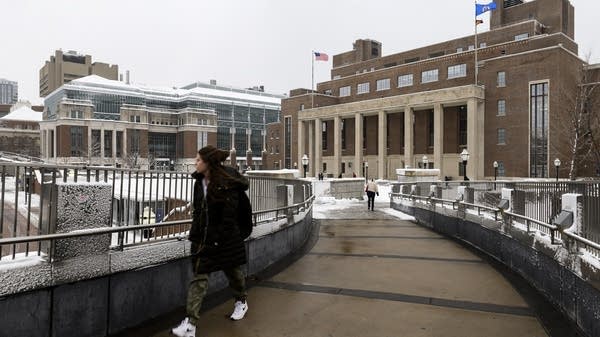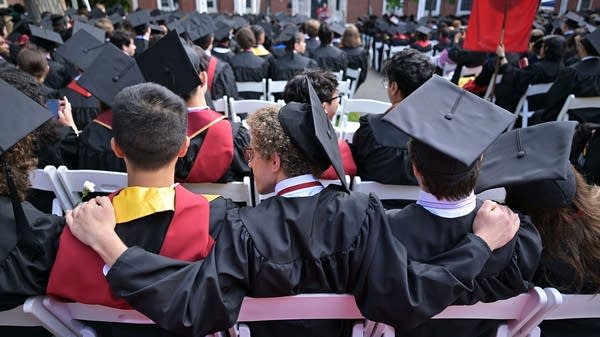There could soon be federal student loan borrowing limits
New borrowing limits could make it harder for some students to afford to go to college.

Right now, if you or your kids get into college or graduate school and don’t have the money to pay for it — which most people don’t — you can borrow however much you need from the federal government to cover tuition and living expenses. If the tax cuts and budget bill currently working its way through Congress passes, that won’t be the case anymore.
“I don't think it can be overstated how significant these changes would be, and how impactful they will be for borrowers,” said Adam Minsky, a lawyer who specializes in student loans.
The legislation that passed the House, as well as the version that’s been proposed in the Senate, would make a number of major changes to the student loan system — changes Senate Republicans estimate would save the federal government and taxpayers about $300 billion. Some of them would also make it harder for low- and middle-income students to afford to go to college.
Both versions of the bill would cap the amount of money parents can borrow from the federal government to help their kids pay for college. Currently, the only limit is the cost of attendance. Under the House bill, parents would only be able to borrow $50,000 total — not per year or per kid, total. The Senate has proposed setting the maximum at $65,000 per child.
“Which may sound like a lot,” Minsky said, “but it's often not enough to cover four years of an undergraduate college education.”
That’s especially the case for low-income students and their families, which means it’s likely many won’t be able to get enough federal financial aid to pay for school.
“These students are going to be forced to turn to the private student loan market, and those loans tend to be much more expensive,” said Persis Yu, deputy executive director and managing counsel at the nonprofit Student Borrower Protection Center.
That’s if they can even get private loans. “They come with pretty onerous credit background checks,” she said, “which means that some people just won't qualify.”
The legislation would also limit how much students can borrow for graduate school to $100,000 total for most programs, and either $150,000 (in the House version) or $200,000 (in the Senate version) for professional programs. Again, that may also sound like a lot but is often not enough to cover the cost of certain degrees — law, medical, dental and business school, in particular, where it can be easy to rack up several hundred thousand dollars in loans.
“It's a big financial risk, obviously, to take on that level of debt,” Adam Minsky said. “But a lot of people can do it given the availability of federal programs such as income-driven repayment programs and Public Service Loan Forgiveness.”
Unlike federal loans, private student loans do not offer any income-based repayment options or paths to loan forgiveness.
“I think that we're going to see drops in enrollment,” Minsky said. “I think fewer people will pursue getting a degree. And I think that we're going to start seeing shortages in certain occupations.”
Eventually, he expects many people will be unwilling or unable to take on big debt to go into lower-paying jobs as primary care doctors, public defenders or social workers.
Beth Akers, a senior fellow at the American Enterprise Institute, said she agrees these new borrowing limits, if they pass, will likely mean fewer people choose to get certain degrees and go into some public service jobs.
“On the other hand, it also protects them from taking on debts that we know, empirically speaking, are going to be unaffordable,” she said. “I don't think making unlimited debt available is the right solution.”
There’s no question higher education has become increasingly unaffordable, said Persis Yu at the Student Borrower Protection Center, “and there is no question that the student loan system is broken. But these proposals are not actually addressing the cost of education.”
Instead, she said, they’re limiting students’ access to it.













